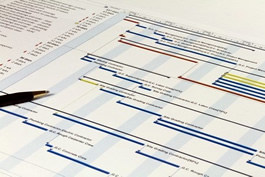 The use of big data analytics is up across all industries, as companies are tapping into the ever-growing well of available information to plan their business strategies. And many organizations are going even further, using big data as an essential tool for project planning. Big data affords enterprises unprecedented insights into market trends and other elements that can determine a project’s success, such as geographical surroundings and population demographics.
The use of big data analytics is up across all industries, as companies are tapping into the ever-growing well of available information to plan their business strategies. And many organizations are going even further, using big data as an essential tool for project planning. Big data affords enterprises unprecedented insights into market trends and other elements that can determine a project’s success, such as geographical surroundings and population demographics.
With this data in hand, companies can make more informed decisions regarding expansion or relocation plans. This can be especially useful in industries like health care and retail, which are already at the forefront of analytics adoption for other purposes, but is certainly applicable for any project of this kind.
Both health organizations and retailers are frequently looking for expansion opportunities, and it is essential for them to make sure that they have the best chance to tap into a new market. With detailed information on the population of a particular city or neighborhood, they can maximize the return on a major investment.
“Using data in the industry is not new,” said University of Illinois School of Architecture professor Randy Deutsch. “The built environment has long been an abundant source of data. What is new is the amount of data that is available to us, our capacity to measure and ability to capture, process, and act on that data and, frankly, our industry’s urgent need to do so.”
Business intelligence analytics is no longer a niche trend, but it does have plenty of room for growth. Even as big data itself increases exponentially, so too do its uses in the business world.








